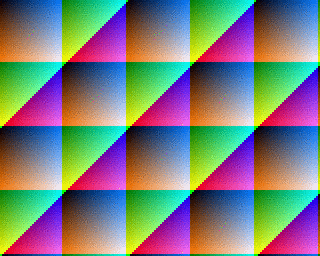Installation of the required software
We need:
- PHP-CLI 7.x to execute the recording script that will receive the META screenshots,
- the PHP GD module for image processing, which will allow us to convert the received binary raw data into PNG files,
- the ImageMagick software suite to convert these PNG files to animated GIF.
Depending on your operating system, the installation procedure is different. Therefore, please refer directly to the sections that apply to you.
Installation of PHP 7 and the GD module
macOS Mojave
You’re right lucky… you’re on a Mac and these software are pre-installed with macOS So you don’t have to do anything special for this step! You can check this with the following commands by opening a Terminal:
$ php -v
PHP 7.1.23 (cli) (built: Nov 7 2018 18:20:35) ( NTS )
Copyright (c) 1997-2018 The PHP Group
Zend Engine v3.1.0, Copyright (c) 1998-2018 Zend Technologies
$ php -m | grep gd
gd # <-- it means that the GD module is properly installed
You can go directly to the section that details the installation of ImageMagick.
Debian Linux
Here I detail the installation procedure for PHP for the Debian distribution. If you have another distribution, you will need to adapt the following commands using the appropriate package manager.
Start by updating your database of available packages:
$ sudo apt update
Then, update your system:
$ sudo apt upgrade
Then check if php-cli and php-gd packages are not already installed:
$ dpkg -l | grep -iE 'php.*-(cli|gd)'
#
# depends on your architecture
# (in my case it's a Raspberry Pi)
# |
# v
ii php7.0-cli 7.0.33-0+deb9u1 armhf command-line interpreter for the PHP scripting language
ii php7.0-gd 7.0.33-0+deb9u1 armhf GD module for PHP
If one of these lines (preceded by ii) does not appear with you, it means that the corresponding package is not yet installed. In this case, proceed as follows for their installation:
# to install php-cli:
$ sudo apt install php-cli
# to install php-gd:
$ sudo apt install php-gd
# or to install both at the same time:
$ sudo apt install php-cli php-gd
Once the packages have been installed, check that everything went well:
$ php -v
PHP 7.0.33-0+deb9u1 (cli) (built: Dec 7 2018 11:36:49) ( NTS )
Copyright (c) 1997-2017 The PHP Group
Zend Engine v3.0.0, Copyright (c) 1998-2017 Zend Technologies
with Zend OPcache v7.0.33-0+deb9u1, Copyright (c) 1999-2017, by Zend Technologies
$ php -m | grep gd
gd # <-- it means that the GD module is properly installed
Windows 10
Download the latest non-thread safe version of PHP 7 at https://windows.php.net

Then unarchive the ZIP content in C:\PHP7, and :
- duplicate the file
C:\PHP7\php.ini-development - by renaming it by
C:\PHP7\php.ini
Open the new file C:\PHP7\php.ini in a text editor like Notepad++ and go to the Directory in which the loadable extensions (modules) reside section, then uncomment the extension_dir = "ext" line:
; Directory in which the loadable extensions (modules) reside.
; http://php.net/extension-dir
;extension_dir = "./"
; On windows:
extension_dir = "ext"
Go a little lower, to the Dynamic Extensions section and uncomment the extensions you want to activate (the one we are interested in here is the gd2 extension):
;;;;;;;;;;;;;;;;;;;;;;
; Dynamic Extensions ;
;;;;;;;;;;;;;;;;;;;;;;
; ...
;extension=bz2
;extension=curl
;extension=fileinfo
; -----------------
; it's right here!
extension=gd2
; -----------------
;extension=gettext
;extension=gmp
;extension=intl
;extension=imap
; ...
Then add C:\PHP7 to your Path environment variable.
Click on the image to enlarge it:
Finally, in the CMD shell, test that the installation went well:
Microsoft Windows [Version 10.0.17763.195]
noob@GAMER-PC C:\Users\noob
$ php -v <-- to test the version of the PHP interpreter
$ php -m <-- to display the list of activated extensions
In the list of activated extensions, you must find gd.
Installation of ImageMagick
macOS Mojave �
For the installation of ImageMagick, I suggest you use the excellent Homebrew package manager, which you can easily install as follows:
$ /usr/bin/ruby -e "$(curl -fsSL https://raw.githubusercontent.com/Homebrew/install/master/install)"
The script explains what it will do, then pauses before executing it.
Once Homebrew is installed, you have the brew command to manage your packages. For more details on how to use it, you can enter the following command in a Terminal:
$ brew help
To install ImageMagick, simply run the command :
$ brew install imagemagick
Next, we will need the convert image conversion utility. You can check that it is now available by running the following command:
$ convert -version
Version: ImageMagick 7.0.8-28 Q16 x86_64 2019-02-19 https://imagemagick.org
Copyright: © 1999-2019 ImageMagick Studio LLC
License: https://imagemagick.org/script/license.php
Features: Cipher DPC HDRI Modules OpenMP
Delegates (built-in): bzlib freetype heic jng jp2 jpeg lcms ltdl lzma openexr png tiff webp xml zlib
Debian Linux �
For Linux, the procedure is pretty much the same, with its own package manager:
$ sudo apt install imagemagick
$ convert -version
Windows 10 �
For Windows, download the latest precompiled version of ImageMagick. Once installed, you can also open the CMD shell and check that the convert tool is installed correctly:
Microsoft Windows [Version 10.0.17763.195]
noob@GAMER-PC C:\Users\noob
$ convert -version
Everything is ready!
And here we are, we have installed all the tools necessary to execute the PHP recording script that will capture the successive META screens and make them PNG files, which we will then convert into animated GIF. So let’s move on to integrating the ScreenRecorder into the C++ code of your sketch…


